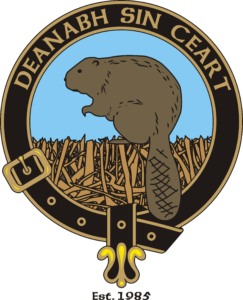9/10: More Rocks for Winslow Trail
We were a crew of two, so we decided to gain time by working from the bottom up instead of the top down. We added a largish pin rock to an older waterbar. At the upper side of the powerline cut, we added a rock step to help hikers climb a short but steep slope. The new step is buttressed by a much larger rock on its downhill side. We added some tree trunks as barricade in a herd path to the right, thus slowing erosion on that route. More barricade on the left means there is now one clear path at that spot, but less erosion.
Then we hiked about 100 yds uphill, over five rock steps we added in 2016, to a rock waterbar. This is made of thin slabs of rock set in a narrow trench, then backfilled so only 1/4 of them shows above ground. The downstream end of the next rock upstream overlaps the upstream end of its downstream neighbor. This ensures that floods do not undermine any rocks, think shingles on a roof. We found and added two slabby rocks to shunt water downstream, so the flood should not overtop the waterbar and run down the trail. Those rocks add four feet to the waterbar. Mind you, all these drains need cleaning at least once a year, in Spring. Raking leaves from them in November helps also.
We talked with many of the passing hikers. Outreach and education, sometimes they actually turn out with the crew later.
One more rock step on the steep soil slope just downhill of the waterbar completes the work for this day. It was cooler under the shade of the leaf canopy. We liked the fact that adopting a trail, and working there every so often, gives one a profoundly deep sense of place, of life and processes in the woods, and of the spiritual healing that happens when you are out in nature.
Craig Sanborn, CHVTC Trailmaster

